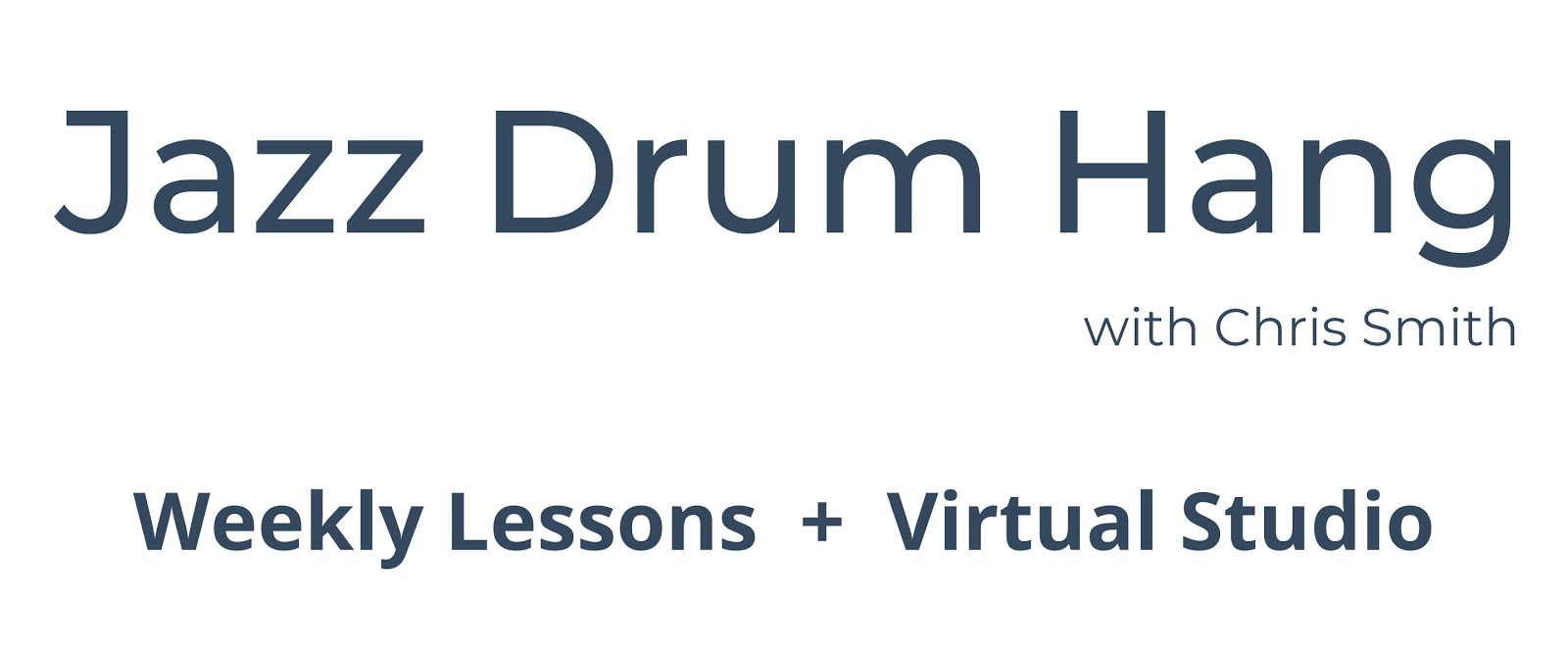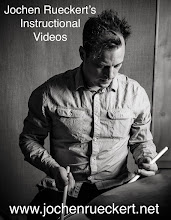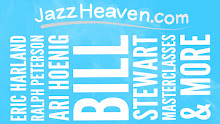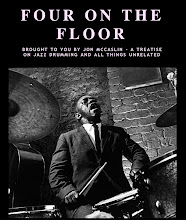Thursday, February 5, 2015
Gerry Shatford - "When I Sat Down to Play the Piano"
Today's post features a Q&A interview with my friend and pianist Gerry Shatford, from Toronto. Gerry recently released a very fine piano trio album with Terry Clarke (drums) and Neil Swainson (bass) featuring his original music influenced by the poetry of Al Purdy.
I first met Gerry in 2002 and played frequently with him and bassist Joel Prenovault at the Cafe Paradiso in Ottawa (now another long-gone, defunct jazz establishment!)
I was really impressed with not only his playing but the depth of his knowledge about the history of jazz piano and of its innovators. He's really done his homework over the years and transcribed a ridiculous amount of music. Naturally, I wasn't surprised to see the depth of his answers when I sent him some questions about his music.
Check out this CD, it's really great!
http://www.cdbaby.com/cd/gerryshatford
(okay, I admit I am a bit biased since I'm a big fan of Terry Clarke's drumming too!)
1) What can you tell us about your musical background? How did you learn to play Jazz?
Seriously studying music, and jazz piano in particular, didn’t begin for me until I had enrolled at McGill University, originally as a composition major with my practical instrumental instruction being classical piano. At that time students could enroll in some of the jazz courses even if they weren’t jazz majors, so I took advantage of “Combo Seminar” and “Jazz Materials” to broaden my range of influences as a composer. I also took private lessons with Art Roberts at his home in N.D.G. It was during this period that I heard a Sonny Stitt recording of “All God’s Chillun Got Rhythm” with Bud Powell on piano, in a jazz history course being taught by Fred Henke; this was one of those “Holy Shit!” moments. Shortly thereafter I auditioned for the jazz programme at McGill, and had a dual and then triple major (composition, classical performance, jazz performance) until it all became too much and I let go of the classical thing.
McGill was a great place to be at that time (late 80’s/early 90’s) as my cohort was extremely strong, and there were so many great teachers as well. I took piano lessons with Fred Henke, André White and Wray Downes, and studied composition with Jan Jarczyk. Plus Montreal was so cheap back then that by teaching a few students and playing a couple of fifty dollar gigs every week I could make my rent and keep myself fed. With the help of a few scholarships along the way I graduated debt-free in 1995.
2) Who are your musical influences and why? Who are your favorite jazz drummers?
Like many students of jazz piano I was directed towards the Red Garland/Wynton Kelly hard bop approach when I first started out. However Bud Powell was the guy that first really set my ears on fire, along with Thelonious Monk. I still see those two guys in a special light as they represent a watershed moment in the evolution of jazz piano; they were the first truly modern pianists, yet they retained a powerful connection with the masters of Harlem stride, and boogie woogie, which is something I just don’t hear in the hard bop pianists of the fifties and sixties. Bud and Monk were terrific composers as well, following in the tradition of the great jazz pianist/composers such as Jelly Roll Morton, James P. Johnson, Fats Waller and Duke Ellington. I can’t stress this enough. So many people think that composition in jazz means writing a line and some changes, but I really think the process should be much more comprehensive. Monk’s tunes are great because all the elements (harmony, melody, rhythm) work together to create something greater than the sum of its parts.
The musicians who have influenced me most tend to be those in whom I have perceived a similar approach, guys who had a really comprehensive approach to composition as well as being great players, like Fats Waller, Horace Silver, Sonny Clark, McCoy Tyner, Herbie Hancock and Stanley Cowell. I also had the great honour and privilege, thanks to a grant form the Ontario Arts Council, of studying closely with Stanley Cowell in the years leading up to my first recording project.
When I think of my favourite jazz drummers I come back to this point about the whole being greater than the sum of its parts. Elvin Jones is someone who comes immediately to mind; Max Roach, Art Blakey and Dannie Richmond as well – just listen to their extraordinary contributions to Herbie Nichols’ recorded output. And try to imagine “Nefertiti” without Tony Williams. All of those guys brought so much to the table when they played with their ability to get right inside the compositions.
3) Name your favorite albums and how they have influenced you.
It’s difficult for me to speak of albums which have influenced me as I rarely listen to anything all the way through anymore, plus so much of my collection now is “the complete” this or that reissues. I tend to think of an artist’s recorded output in terms of a specific period in their career, and then lump all of those recordings (many of which would have been released as 78’s originally) together. For example, Bud Powell’s recorded output from 1947 to 1953 for Roost, Blue Note and Verve is one big beautiful blob to me. I’ve played tons of those tunes and arrangements over the years; while I was doing my Master’s degree at York I undertook a project with Barry Elmes that focused on this repertoire, playing “Un Poco Loco”, “Tempus Fugit”, “Dance of the Infidels”, “Oblivion” and “Parisian Thoroughfare”, as well as his intriguing arrangements of standards like “Autumn in New York” and “Back Home Again in Indiana”.
Thelonious Monk recorded for Blue Note originally, and then made some breakthrough recordings for Riverside, which led to a deal with Columbia, but my favourite Monk recordings are the ones he made for Prestige, before he signed up with Riverside, and then the Black Lion and Vogue recordings he made near the end of his career. I learned a lot of Monk’s tunes and arrangements from these recordings as they are in trio format for the most part. The importance of Art Blakey’s presence on many of those sides can’t be overstated - the groove he plays on “Bye-ya” is part of the tune.
Fats Waller recorded numerous solo piano sided for Victor which I have obsessed over for many years. I learned a bunch of these note-for-note: “Carolina Shout” (by James . Johnson), “Handful of Keys”, “Tea for Two”, “Ain’t Misbehavin’”, “Ring ‘Dem Bells”, etc.etc.
I have a giant collection of Jelly Roll Morton’s piano solos on a re-issue as well. Again, I have transcribed a bunch of these like “King Porter Stomp”, “Grandpa’s Spells”, “Wolverine Blues”, “The Fingerbreaker” and “New Orleans’ Joys”.
I think of McCoy Tyner’s early recordings for Impulse! as one big album as well, culminating with “The Real McCoy” (which was on Blue Note of course). I remember some late night sets at Café Paradiso where we played the whole “Real McCoy” album in order like a concert suite. I want to get back into those tunes again soon, especially the Impulse! stuff, like “Inception”, “Effendi” and “Monk’s Blues”.
Again I think of all those 1950’s Miles Davis albums on Prestige as one big album, even though the personnel and quality varies from one to the next. I put “Dig” (with Art Blakey again) on the other day, which in my youth I had thought of as sub-standard Davis, and absolutely loved it, even when they play a long slow blues which falls apart at the end and you hear Blakey yell “How did I know you were gonna end that thing?” Or Miles Davis being off-mike after Horace Silver’s piano solo on “Walkin’” (from the album of the same name) – you can hear Miles walking across the studio, the trumpet sound gradually coming more and more into focus. How many recent jazz albums can you think of that have those “you-are-there” moments on them?
Stanley Cowell has a lot of stuff out on Steeplechase and DIW (late 80’s to the present) that I have spent hours and hours with as well. His tunes are incredibly well structured and deserve to be better known: “Equipoise”, “Brilliant Circles”, “Sienna”, “Winter Reflections” and “Cal Massey” are all terrific. I’m currently plugging away at a tune of his called “Abscretions” – don’t ask me what the title means because I won’t tell ya, (and not because I don’t know).
4) What sort of things are you practicing on the piano and developing as a composer/arranger these days?
I practice the piano for several hours just about every day, mostly repertoire. While I have a lot of technical stuff that I work on routinely, the goal is always to integrate whatever I’m working on into a tune. I have a scale routine that I developed from George Russell’s book, plus I spend a lot of time moving chords around in different ways (e.g. drop 2, Milt Buckner and Red Garland style block chords) and in all the keys. I try to get through this stuff early in the morning before I have to get my son off to school.
And then there’s new repertoire that needs to be addressed always. Every time I devote my attention something new, whether it’s a standard that had thus far escaped my attention or an improvised solo I’ve transcribed, I always notice that my playing on long-familiar repertoire becomes a little bit sharper. I recently spent hours and hours learning a Kenny Barron solo on “Well You Needn’t” that pushed my technical abilities to the limit and the payoff was tremendous.
Presently I’m decoding Brad Mehldau’s arrangement of “All the Things You Are” with its multiple keys and time signatures (although it settles into a consistent 7 once the rhythm section kicks in) to further develop my understanding of the odd-meter thing.
I’ve also been practicing different arrangements of more contemporary pop tunes as well, like Mehldau’s take on “She’s Leaving Home” and the Bad Plus version of “Smells Like Teen Spirit” to enhance my ability to adapt these types of tunes for jazz use.
5) How has jazz drumming and rhythm influenced your writing?
I feel jazz drumming and rhythm should be at the centre of everything one does as a composer. When I think of my favourite jazz melodies it’s very easy to imagine them as drum solos (take “I Mean You”, “Moose the Mooche” , or “Carolina Shout” as examples). When writing I often start with a rhythmic idea, then look for a complimentary pitch contour and harmonization. I’m also frequently thinking of cross-rhythms when I’m writing and although I’m primarily influenced by boogie woogie piano in this regard, it’s definitely something that’s directly related to jazz drumming as well. Quite a few of the tunes on my album feature quarter note triplets which cross the bar-line, which is a rhythmic concept I gleaned from years of playing boogie woogie, but it’s a rhythm that locks in so elegantly with the skip beat and hi-hat pattern that I see it as something that’s linked very powerfully with the drums.
6) What interesting projects do you have on the go at the moment? (gigs, recordings, etc.)
I’m currently preparing for a concert in Kingston on March 8th as part of the Kingston Jazz Society’s “Live at Your Library” series. I will be presenting all of the tunes from my album as a concert suite. Barry Elmes will be playing drums on this which will be a real treat for me. In addition to the aforementioned Bud Powell project, Barry also workshopped the tunes on my album with me while I was a graduate student at York and I incorporated many of his musical suggestions at that time. Barry gets a beautiful tone from the drums – rich and warm that just fills out the tunes beautifully whatever the dynamic level is, plus he has that ability to get inside every tune so that he’s playing the composition, not just the drums. Neil Swainson will be rounding out the trio on bass; Neil always plays the perfect thing and he always plays it perfectly – what more could you ask for?
7) Your most recent trio recording project featuring Neil Swainson and Terry Clarke brings together some different sounds and influences. Please tell us all about this exciting project, the music and your compositions.
My recent trio recording “When I Sat Down to Play the Piano” is a collection of eight original compositions inspired by the poetry of Al Purdy. This project grew out of my Master’s thesis at York University, and was generously funded through a Popular Music Recording Grant from the Ontario Arts Council. I really enjoyed pulling together a programme of compositions that would reflect my interest in various jazz piano styles and simultaneously honour the breadth of Purdy’s vision. Each tune began with my reading of the poem, rhythmically (i.e. with a specific tempo and feel in mind that would reflect the content of the poem) and transcribing the results. These rhythms then became the basic building blocks for the compositions as I added pitches to create melodies.
“Piling Blood” which opens the album incorporates a lot of the concepts Stanley Cowell had laid on me – wide intervallic leaps, contrary motion, bitonality – plus the metric modulations which grew out of a 3/8 against 4/4 cross-rhythm in the original melody, derived from the opening lines of the poem. I was listening to Tony Williams’ playing on the Miles Davis Plugged Nickel recordings when I decided to include the tempo shifts which bookend the improvised solos on this one.
“Love at Roblin Lake” is a Bird blues which allowed me to indulge my love of pure 1940’s bebop – “shell” voicings in the left hand, tri-tone substitutions, chromatic ii-V’s. In the poem Purdy writes “boing boing boing” a couple of times (I’m not kidding) so I incorporated that as well, although I added an extra boing. (Listen for it.)
“How a Dog Feels to Be Old“ is a bossa ballad. The imagery in the poem of night-time, moonlight and the gentle motion of water are all reflected here.
“Home-Made Beer” grew out of my interest in creating a Jelly Roll Morton-style composition, with “the Spanish tinge” in the left hand. The rhythm I gleaned from the opening lines of the poem dovetailed beautifully with this, and I just went with it. There’s a line in the poem where Purdy describes breaking a broom across his knee which I reflected by including some forearm clusters.
“Mice in the House” is an up-tempo “I’ve Got Rhythm” variant. I had undertaken a project transcribing several solos on rhythm changes where the soloist departs from the traditional harmonic underpinnings and plays quite freely (Bill Evans, Keith Jarrett, Chick Corea, Herbie Hancock, Brad Mehldau) and wanted to have a tune of my own wherein I could deploy some of the concepts I had discovered, plus the melody I had derived from the poem was very “Rhythm-a-ning”-like.
“When I Sat Down to Play the Piano” is the most Monk-like of the compositions of this album. The poem describes trying to have a bowel movement in the arctic, surrounded by a pack of fierce huskies with an inexplicable appetite for human excrement. I got most of the rhythms in the melody from Purdy’s text, including a 4 against 3 motive from the “violet toilet tissue” the protagonist carries with him. It seemed fitting to harmonize the melody with dissonant Monk-like harmonies which a friend of mine once described as “pungent”.
“The Dead Poet” is the most abstract composition on the album, reflecting the strange and mystical nature of the poem. Much of the time we’re playing free on this one, but instead of harmonizing the initial melody I let it harmonize itself by catching as many notes (middle C and below) with the sostenuto (middle) pedal of the piano. The sympathetic vibrations create a harmonic “fog” around the melody. Later I harmonize the melody properly with a series of altered dominants. For the blowing we play something like the “Spiritual” groove from Coltrane’s “Live at the Village Vanguard”.
“At the Quinte Hotel” finishes the album off with some raucous, Jimmy Yancey-inspired boogie woogie. In the poem Purdy describes a glass of beer as “half fart and half horse piss… and all wonderful yellow flowers” which has a lovely, rolling triplet feel to it. The narrative takes place in a tavern which also inspired the boogie woogie setting of the composition.
*Gerry Shatford and his trio appear at the Kingston Jazz Society on Sunday, March 8th @ 2pm
http://www.ticketscene.ca/events/12193/
Subscribe to:
Post Comments (Atom)



















No comments:
Post a Comment